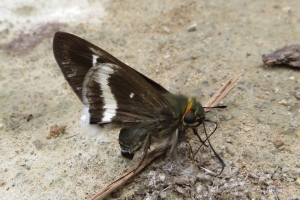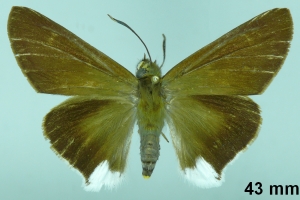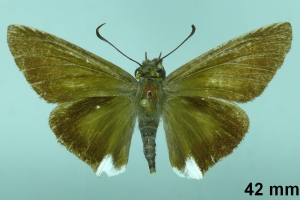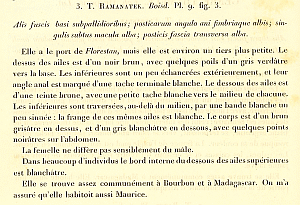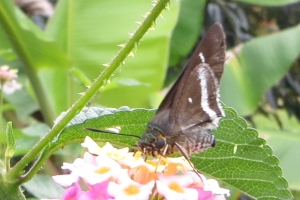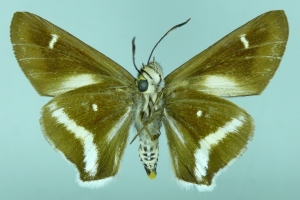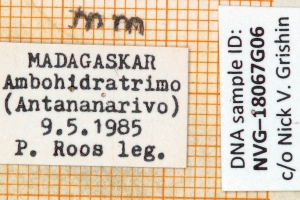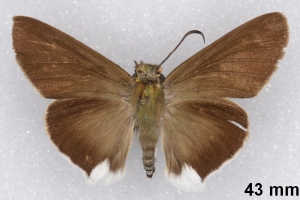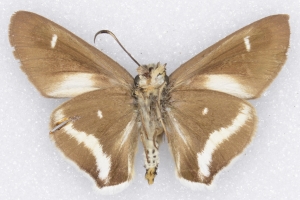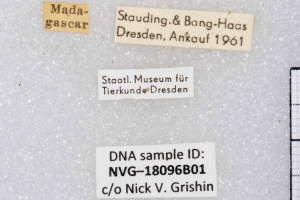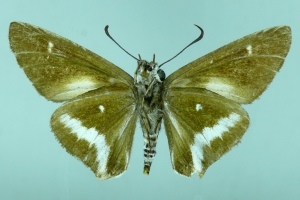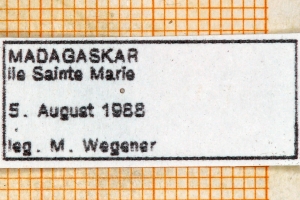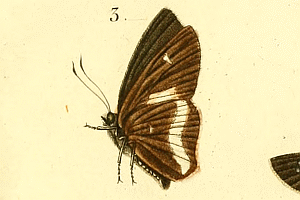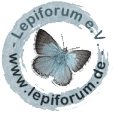Länder:

 +6Kontinente:AF
+6Kontinente:AF


 +6Kontinente:AF
+6Kontinente:AFInhalt
2. Diagnose
2.1. Männchen
1-3: ♂, Daten siehe Etiketten (coll., det. & fot.: Ernst Brockmann, Fotos bearbeitet: Michel Kettner)
4-6: ♂, Daten siehe Etiketten (fot.: Nick V. Grishin, Fotos bearbeitet: Michel Kettner), coll. Senckenberg Museum für Tierkunde, Dresden.
2.2. Weibchen
1-3: ♀, Daten siehe Etiketten (coll., det. & fot.: Ernst Brockmann, Fotos bearbeitet: Michel Kettner)
2.3. Erstbeschreibung
3. Weitere Informationen
3.1. Andere Kombinationen
- Thymele ramanatek Boisduval, 1833 [Originalkombination]
- Coeliades ramanatek (Boisduval, 1833) [bis Li et al. (2019) übliche Kombination]
3.2. Unterarten
- Tekliades ramanatek comorana (Evans, 1937)
3.3. Taxonomie und Faunistik
Boisduval (1833: 210) beschrieb seine Thymele ramanatek von Madagaskar (auf Bourbon und Mauritius fehlt sie). Die Art ist sonst nur noch in der ssp. comorana auf den Komoren zu finden. Sie lief länger in der Kombination Coeliades ramanatek, erst Grishin in Li et al. (2019) stellte für sie eine neue Gattung auf: Tekliades.
Nach [Global Biodiversity Information Facility] kommt die Art nicht nur in Madagaskar ud auf den Komeren vor, sondern auch auf Mayotte, in Uganda und der Demokratischen Republik Kongo.
(Autoren: Erwin Rennwald & Michel Kettner)
3.4. Literatur
- Erstbeschreibung: Boisduval, [J. A.] (1833): Faune entomologique de Madagascar, Bourbon et Maurice. Lépidoptères: 1-122, pl. 1-16. Paris (Roret).
- Erstbeschreibung (?): Boisduval [J. A.] (1833): Descriptions des lépidoptères de Madagascar. — Nouvelles annales du muséum d'histoire naturelle 2: 149-270, pl. 1-8. Paris (Roret).
- Chiba, H. (2009): A revision of the subfamily Coeliadinae (Lepidoptera: Hesperiidae). — Bulletin of the Kitakyushu Museum of Natural History & Human History, Series A, 7: 1-102. [zum PDF auf researchgate.net]
- Li, W., Cong, Q., Shen, J., Zhang, J., Hallwachs, W., Janzen, D.H. & N.V. Grishin (2019): Genomes of skipper butterflies reveal extensive convergence of wing patterns. — PNAS, 116 (13): 6232–6237. www.pnas.org/cgi/doi/10.1073/pnas.1821304116. [zum open-access-Artikel mit PDF-Download auf pnas.org]







